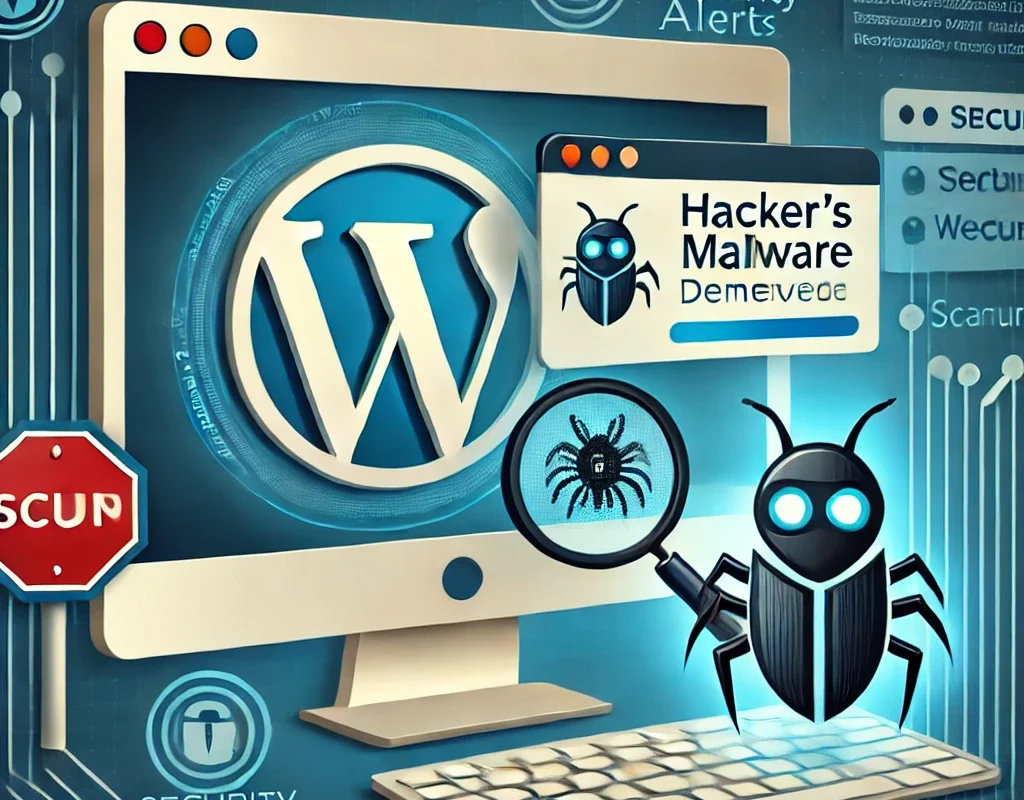
Detect and Remove Undetectable Malware in WordPress
Introduction
Malware infections are one of the biggest threats to WordPress websites, and hackers are getting smarter at hiding malicious code. Many website owners only realize they have malware when their site is blacklisted by Google or starts behaving erratically.
So, how do you detect and remove undetectable malware before it causes irreversible damage?
In this guide, we’ll cover:
- How malware hides in WordPress
- Methods to detect hidden threats
- Free and premium tools for malware scanning
- Steps to manually remove malware
- Proactive security measures to prevent infections
By the end, you’ll be able to clean your WordPress site and safeguard it from future attacks.
How Malware Hides in WordPress
Hackers use various techniques to conceal malware, making it difficult to detect with basic security scans. Some common hiding spots include:
1. Infected Core Files
Malware can be injected into core WordPress files like wp-config.php, .htaccess, and index.php.
2. Malicious Plugins & Themes
- Pirated (nulled) themes/plugins often come with pre-installed malware.
- Outdated plugins with vulnerabilities can be exploited.
3. Database Injections
- Hackers inject malicious scripts into WordPress databases, often targeting the
wp_postsandwp_optionstables.
4. Backdoors & Hidden Files
- Malware creates hidden files in directories like
/wp-includes/and/wp-content/uploads/. - Hackers install backdoors (e.g., disguised PHP scripts) to regain access even after malware is removed.
5. JavaScript & iFrame Injections
- Injecting scripts into website footers, widgets, or advertisements.
- Redirecting users to phishing or malicious sites.
How to Detect Hidden Malware in WordPress
Since malware is often undetectable to the naked eye, you need the right tools and techniques.
1. Use a Malware Scanner
✅ Free options:
- Wordfence Security – Scans for malware & backdoors
- Sucuri Security – Detects security breaches & blacklist status
- Anti-Malware Security – Scans & removes known threats
✅ Premium options:
- MalCare – Automated malware detection & removal
- iThemes Security Pro – Advanced threat detection
2. Check for Suspicious File Changes
Run the following command in SSH to find recently modified files:
find . -type f -mtime -5
(This searches for files modified in the last 5 days.)
3. Scan Your Database for Malicious Code
Run the following SQL query in phpMyAdmin to search for suspicious scripts:
SELECT * FROM wp_posts WHERE post_content LIKE '%<script%';
4. Monitor Unusual Admin Activity
- Go to Users → All Users in WordPress to check for unauthorized admin accounts.
- Use WP Activity Log to track suspicious login attempts.
5. Analyze Website Traffic
Check Google Search Console for sudden traffic spikes or warnings about malware.
How to Remove Malware from WordPress (Step-by-Step)
Step 1: Backup Your Website
Before making changes, create a full backup using:
Step 2: Enable Maintenance Mode
Use SeedProd to temporarily disable access while cleaning.
Step 3: Restore Clean WordPress Core Files
Replace infected WordPress core files with fresh ones:
- Download a clean version from WordPress.org.
- Replace all files except
wp-config.phpandwp-content/.
Step 4: Remove Malicious Code Manually
- Open infected files (
wp-config.php,.htaccess,index.php). - Look for obfuscated PHP code like
eval(base64_decode(...))and remove it.
Step 5: Clean the Database
- Use phpMyAdmin to access the database.
- Remove malicious scripts from
wp_posts,wp_options, andwp_userstables.
Step 6: Reinstall Plugins & Themes
- Delete nulled or suspicious themes/plugins.
- Reinstall only from trusted sources like WordPress.org.
Step 7: Change All Passwords
- Update WordPress admin, database, and hosting passwords.
- Use LastPass for secure password storage.
Preventing Future Malware Infections
1. Use a Web Application Firewall (WAF)
✅ Free: Cloudflare Free Plan ✅ Paid: Sucuri WAF
2. Implement Login Security
- Enable 2FA with Google Authenticator.
- Limit login attempts with Limit Login Attempts Reloaded.
3. Schedule Regular Security Scans
Automate malware scanning with Wordfence or MalCare.
4. Disable PHP Execution in Uploads Folder
Add this code to .htaccess:
<FilesMatch "\.php$">
Order Allow,Deny
Deny from all
</FilesMatch>
5. Regularly Update WordPress, Themes & Plugins
Outdated software is a major security risk. Enable auto-updates or use Easy Updates Manager.
Conclusion: Keep Your WordPress Site Malware-Free
Detecting and removing undetectable malware requires constant vigilance. With the right tools, proactive monitoring, and regular updates, you can protect your site from hackers.
Final Security Checklist:
✅ Scan for malware regularly
✅ Remove suspicious files & database entries
✅ Use a firewall & security plugins
✅ Keep backups & software updated
✅ Monitor admin activity & login attempts
Have a question? Drop it in the comments!




Leave a Comment